Childbirth - Ways to relief pain during childbirth
- Here is some information you need to know about labour, its stages and analgesia that can be used :
- What is labour?
When the time comes, uterine contractions will make the baby to go out to life.
There are signs for labour but it is difficult to know its time.
Video of normal vaginal delivery | Video Stages Of Labour
Video Explanation of the Labour Process
Stages of labour:
- There are three stages of labour:
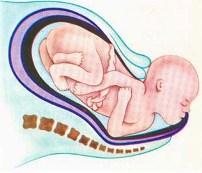
1st stage:
It takes between 8-12 hours in primigravida, 4-6 hours in multipara; it may shorten or lengthen according to the patient condition, when labour starts it continues till full dilatation of the cervix 10 cm to allow the passage of the head.
2nd stage:
Its length between 10-30 minutes in multipara, or more than 42 minutes in primigravida. It is the stage of passage of the head.
3th stage:
It takes 10-20 minutes, and it is the stage of passage of the placenta.
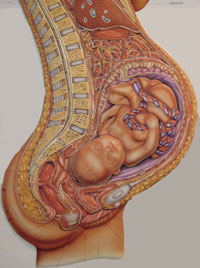
- You may feel irregular, and separate labour pain in the last weeks of pregnancy, and once they become regular intervals, about 5 minutes, it is the time for delivery.
- During the second stage you will start to feel pushing down.
- Feeling pain is different from one patient to another, even if it was less severe.
The cause of pain is the pressure made on the nerves near the uterus.
Causes of labour pain:
- Cervical dilatation in response to uterine contraction.
- Contraction and retraction in the lower uterine part in preparation to dilate the cervix.
- Contractions and retractions affect blood vessels which supply the uterine muscles and this will cause accumulation of metabolites which leads to pain.
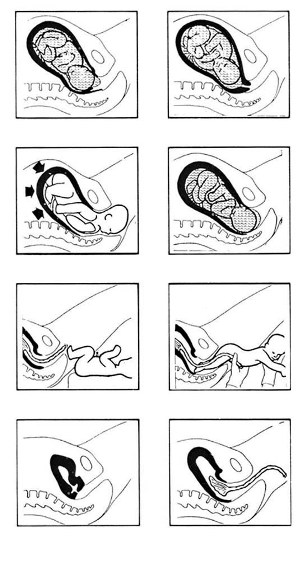
- Once contractions occur they will cause tension on the ligaments that hold the uterus, and by that it will cause pain.
- Where you may feel pain?
- Most of the time it concentrates down in the abdomen.
- At the sides of the pelvic bone.
- From the umbilicus down to the genital area.
- Lower back.
- Signs of labour:
- Labour pain which is regular uterine contraction separated by short interval of time that can’t be relieved by analgesia.
- Bloody show.
- If you are primigravida you may feel irregular uterine contractions ½-1 hour apart, and that can be relieved with analgesia.
- When should you go to the hospital?
- If labour pain started.
- Heavy sudden bleeding.
- Passage of watery vaginal discharge wetting your clothes.
- Passage of greenish watery vaginal discharge
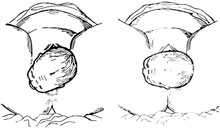
- What should you do during labour?
1st stage of labour:
- Don’t push downward.
- Take slow deep breath.
- Lie on the left or right side.
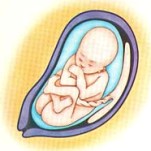
2nd stage of labour:
Follow your doctor’s instructions, that is, by taking deep breaths, then push downward with each contraction (as if you want to defecate), then rest and relax in between contractions. Please do not scream in this stage, or pull your hair, or jump from the bed.
Your doctor may need to cut an incision in your perineum especially in primigravida to help your baby through the process. This is done under local anesthesia.
3rd stage of labour:
- Empty your bladder.
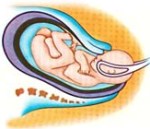
- When blood gushes out of your vagina your doctor will pull the umbilical cord, so try to help by pushing down, then he will do uterine massage to help the uterus to contract.
- Once labour is finished, your doctor will start suturing your perineum under local anesthesia.
- In cases of difficult labour, your doctor may need to use vacuum or forceps, in order to get the baby out, so you need to know what type of delivery may be necessary.
Caesarean section:
- It can be done under general or spinal anesthesia.
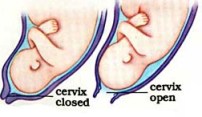
- It is done to save the life of the mother or her baby as in cases of:
Cephalo-pelvic disproportion, fetal distress, placenta previa, severe bleeding, severe pre-eclampsia.
- How pain could be managed during labour?
- Psychoprophylaxsis or natural birth:
- In this method, no analgesia is used but it involves increasing the spirit of the pregnant woman, and asking her to relax, breathe deeply and slowly, during labour.
- So, if the doctor explains what will occur during labour to the pregnant woman, especially to primigravida, this will help her to tolerate pain.
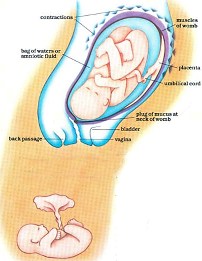
- Pain Killing Drugs
- Which are given either intramuscularly or intravenously.
- Type of analgesia, its method of administration, amount of medication, (depends on the patient condition during labour).
- Epidural analgesia
- In this method, the drug is inserted in the epidural space after local anesthesia.
- The anesthesiologist will test the efficiency of the drug by pricking the patient gently, starting from the thigh to the abdomen...... -Does this type of anesthesia affect labour?
- It usually has no direct effect. It may lengthen, shorten or not affect the duration of delivery.
Video of normal vaginal delivery | Video Stages Of Labour
Video Explanation of the Labour Process | Caesarean section Video
Few notes to add :
- Analgesia during labour is a choice left for the pregnant woman, and her doctor, to determine if this is possible or not.
- If you notice any of these things, call your doctor immediately:
- Bleeding.
- Passage of watery vaginal discharge.
- uterine contraction lasting 15-20 seconds in the beginning then increase to 40-50 seconds, occuring at 2-3 minutes intervals. At this time, concentrate on taking deep and slow breaths.
- When you arrive to the hospital, the nurse and the resident doctor will assess your condition, if it is early labour, then you may be discharged home. If you are in true labour you will be admitted to the hospital.
- You also may be admitted to the hospital if you are hypertensive, or complain of pre-eclampsia, diabetic, or if there is fetal distress.
- After delivery, your baby’s mouth and nostrils will be cleaned from mucus, and covered.
The umbilical cord will be cut in order that your baby will breathe from his nose and mouth.
Then another sequence of contractions will occur in order to deliver the placenta.
You will carry your baby between your hands and his weight and length will be measured.
Baby Names Book, Arabic Baby Names
http://www.babynamesbook.net
Dr Najeeb Layyous F.R.C.O.G
Consultant Obstetrician, Gynecologist and Infertility Specialist







 Pregnancy Due Date Calculator
Pregnancy Due Date Calculator
 Chinese Gender Predictor
Chinese Gender Predictor
 Ovulation Calculator
Ovulation Calculator
 IVF Due Date Calculator
IVF Due Date Calculator
